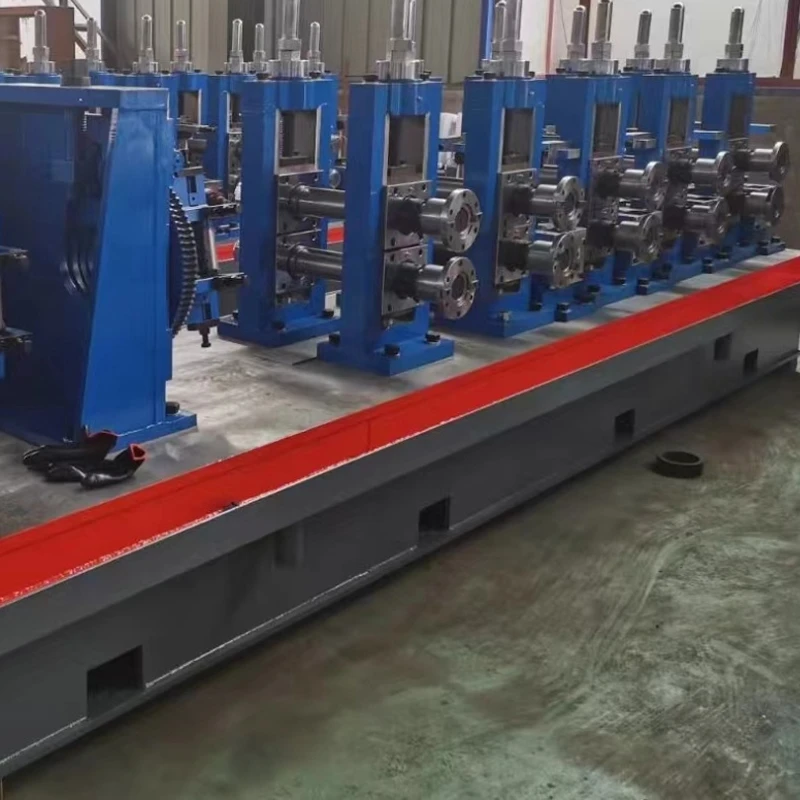uncoiler
Uncoilers An Essential Component in Material Handling
In the world of manufacturing and material handling, the uncoiler plays a pivotal role that is often overlooked. This essential piece of machinery is designed to unwind coiled materials, such as metal sheets, steel strips, or plastic films, and feed them into various production processes. The uncoiler serves as the first step in a series of operations that turns raw material into finished products, making it a critical part of the supply chain. In this article, we will explore the functionality, types, benefits, and applications of uncoilers in modern manufacturing settings.
Understanding the Functionality of Uncoilers
An uncoiler consists of several key components, including a motor drive, a mandrel, and a frame. The coiled material is placed on the mandrel, which is then rotated by the motor to slowly unwind the material. This controlled unwinding is essential to prevent damage to the material and ensures a smooth feeding process into subsequent machines, such as slitting machines or presses.
Uncoilers can be manual or automated, depending on the specific requirements of the production environment. Manual uncoilers require operators to manually feed the material, which can be time-consuming and labor-intensive. On the other hand, automated uncoilers are equipped with sensors and controls that allow for seamless operation, enhancing efficiency and reducing the risk of human error.
Types of Uncoilers
There are various types of uncoilers designed to suit different applications and industries. Some of the most common types include
1. Standard Uncoilers These are typically used for medium to heavy-duty applications. They can handle a wide range of coil diameters and weights, making them versatile for different materials.
2. Vertical Uncoilers Ideal for applications requiring limited floor space, vertical uncoilers allow for coils to be loaded from above, saving valuable floor area while maintaining easy accessibility.
3. Heavy-Duty Uncoilers Designed for very large coils, these uncoilers are built to withstand the stresses associated with heavy materials, ensuring safety and stability during operation.
4. Hydraulic Uncoilers Utilizing hydraulic power to manage the unwinding process, these uncoilers provide additional torque and control, particularly useful for handling sensitive materials or intricate designs.
Benefits of Using Uncoilers
The implementation of uncoilers in manufacturing processes offers numerous benefits
uncoiler

- Improved Efficiency Uncoilers automate the unwinding process, allowing for continuous material flow and reducing downtime associated with manual handling.
- Enhanced Safety By minimizing manual handling of heavy coils, uncoilers reduce the risk of injury to workers and damage to materials.
- Consistency in Material Feed Automated uncoilers ensure a uniform feed rate, leading to consistent quality in the final product.
- Cost-Effectiveness With increased efficiency and reduced labor costs, the use of uncoilers can significantly lower the overall production costs.
Applications of Uncoilers
Uncoilers are utilized across various industries, including
- Metal Fabrication In steel and aluminum processing, uncoilers are essential for feeding raw material into cutting and forming machines.
- Automotive Manufacturing Uncoilers provide the necessary support for the production of components, such as body panels and structural parts.
- Electronics The precision required in electronics manufacturing often relies on uncoilers to handle thin films and delicate materials.
- Packaging Uncoilers play a critical role in packaging operations where films and other materials must be unwound for further processing.
Conclusion
As the manufacturing landscape continues to evolve, the importance of equipment like uncoilers cannot be understated. They are fundamental to the efficiency, safety, and consistency of material handling processes across diverse industries. By understanding the functionality, types, benefits, and applications of uncoilers, manufacturers can make informed decisions to enhance their production capabilities. Investing in reliable uncoiling technology not only streamlines operations but also lays the groundwork for innovation and growth in an increasingly competitive market.
-
High Frequency Straight Seam Welded Pipe Production Line-BzZhou Xinghua Machinery Equipment Manufacturing Co., LTD.|line pipe steel&welded gas pipeNewsJul.30,2025
-
High Frequency Straight Seam Welded Pipe Production Line-BzZhou Xinghua Machinery Equipment Manufacturing Co., LTD.|High Precision&Automated SolutionsNewsJul.30,2025
-
High Frequency Straight Seam Welded Pipe Production Line - BzZhou Xinghua Machinery Equipment Manufacturing Co., Ltd.NewsJul.30,2025
-
High Frequency Straight Seam Welded Pipe Production Line-BzZhou Xinghua Machinery Equipment Manufacturing Co., LTD.|Precision Welding, High EfficiencyNewsJul.30,2025
-
High Frequency Straight Seam Welded Pipe Production Line|BzZhou Xinghua|Precision Welding&EfficiencyNewsJul.30,2025
-
High Frequency Straight Seam Welded Pipe Production Line - BzZhou Xinghua|Precision Engineering&EfficiencyNewsJul.30,2025


